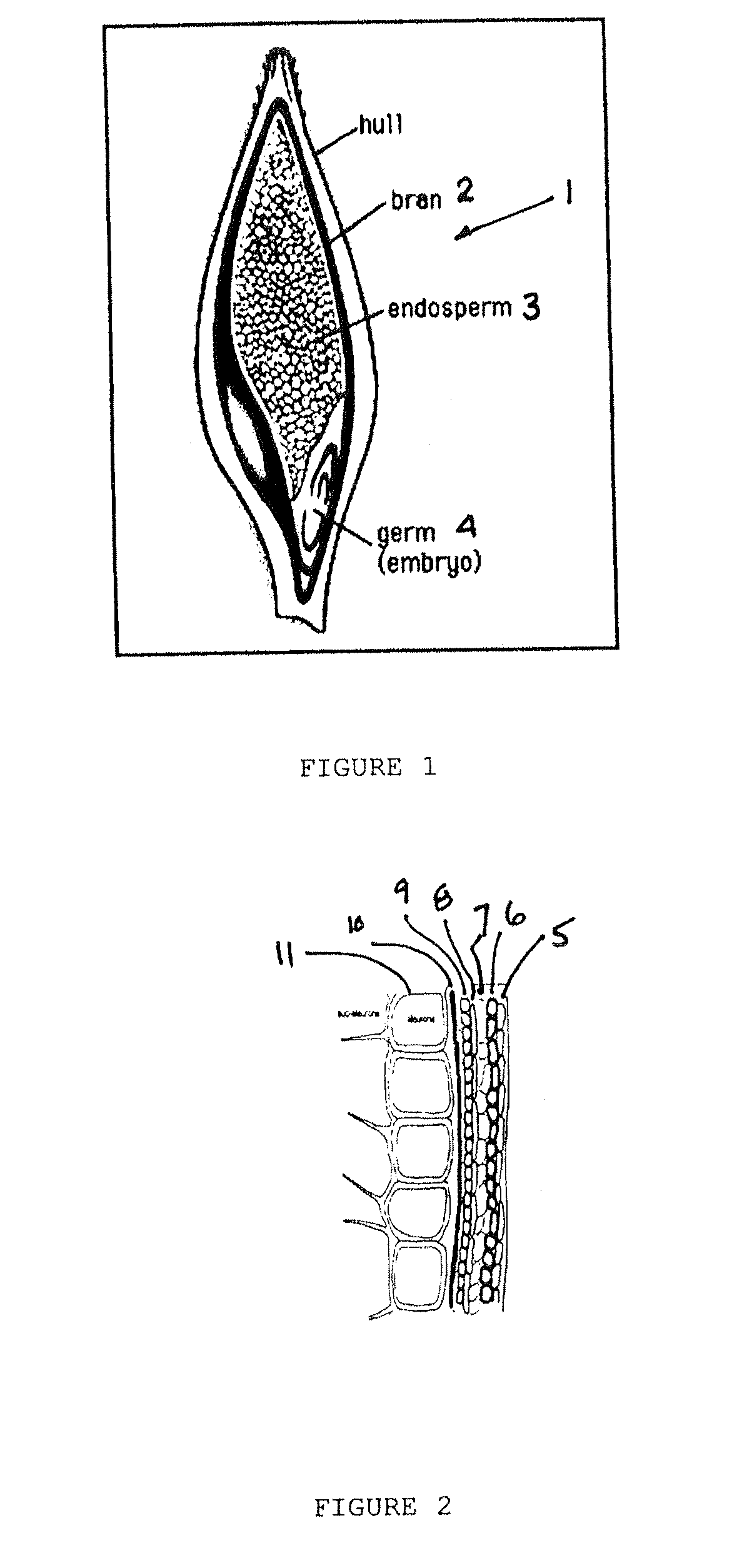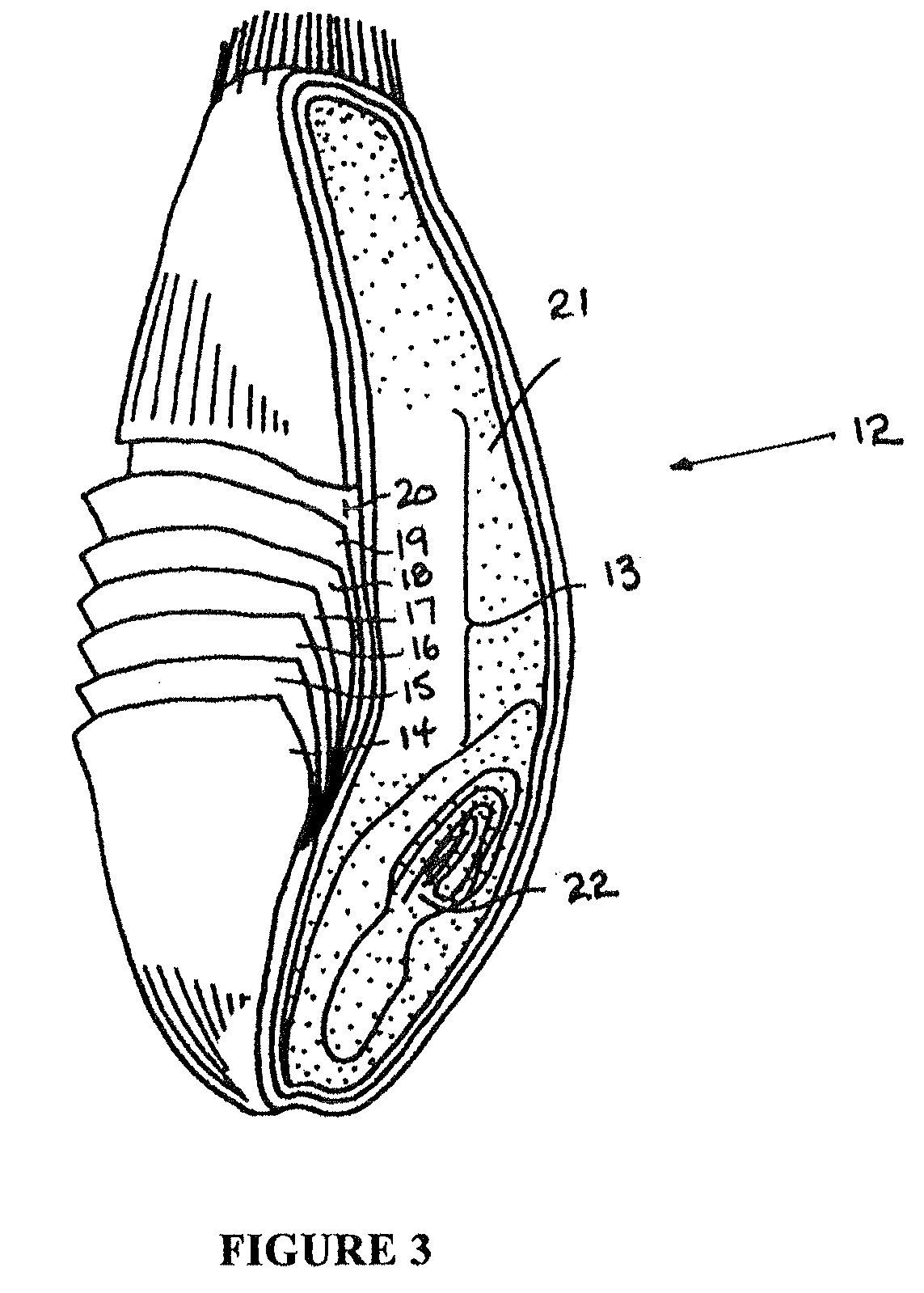Nutraceutical fractions from cereal grains
a technology of cereal grains and nutraceuticals, which is applied in the field of nutraceutical fractions from cereal grains, can solve the problems of difficult, if not impossible, to remove from the endosperm, and the components are considered to have a detrimental effect on the end milled products, and achieves good hypoglycemic index
- Summary
- Abstract
- Description
- Claims
- Application Information
AI Technical Summary
Benefits of technology
Problems solved by technology
Method used
Image
Examples
Embodiment Construction
[0020]The outer bran layer of cereal grains is composed of different cell layers having different chemical and physical properties. The barley grain 1, for example, is shown schematically in FIG. 1. Barley can be either of a conventional variety that has a husk or hull enclosing the barley grain or a hull-less variety. In either case the barley grain 1 has an outer bran layer 2 encasing the endosperm 3 and germ 4. The outer bran layer of barley as shown schematically in FIG. 2 has seven different layers: the epidermis 5, hypodermis 6, cross cells 7, tube cells 8, seed coat 9, nucellar tissue 10 and aleurone cells 11. Barley has been shown to have many valuable health and nutritional characteristics, including promoting the health and improved function of the digestive system and the immune system. USDA clinical trials have shown that the consumption of barley containing beta glucan significantly improved several cardiovascular risk factors in high cholesterol men, reducing cholester...
PUM
| Property | Measurement | Unit |
|---|---|---|
| chemical | aaaaa | aaaaa |
| physical properties | aaaaa | aaaaa |
| concentrations | aaaaa | aaaaa |
Abstract
Description
Claims
Application Information
 Login to View More
Login to View More - R&D
- Intellectual Property
- Life Sciences
- Materials
- Tech Scout
- Unparalleled Data Quality
- Higher Quality Content
- 60% Fewer Hallucinations
Browse by: Latest US Patents, China's latest patents, Technical Efficacy Thesaurus, Application Domain, Technology Topic, Popular Technical Reports.
© 2025 PatSnap. All rights reserved.Legal|Privacy policy|Modern Slavery Act Transparency Statement|Sitemap|About US| Contact US: help@patsnap.com



